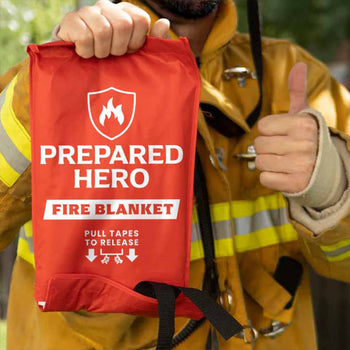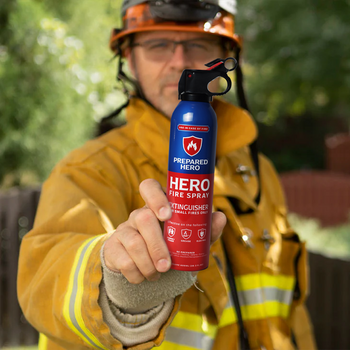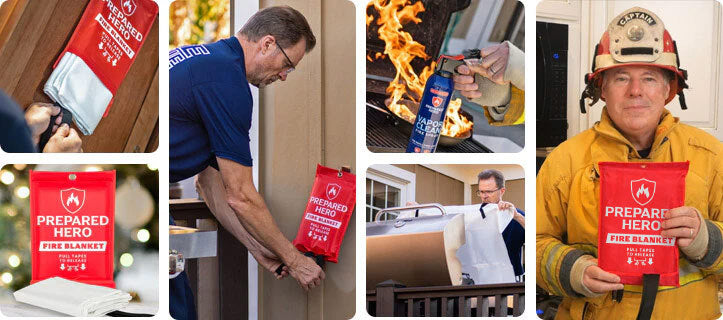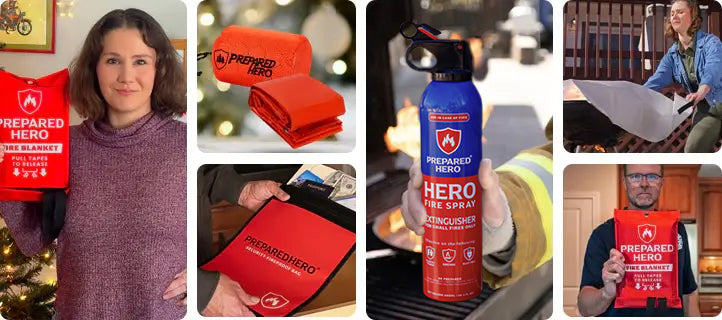Where you put your smoke detectors matters just as much as installing them. Proper placement makes sure they can detect...
Class B fires are often more difficult to put out compared to other fire types. They can occur in homes, laboratories, and industrial settings. Unfortunately, many people don’t know what they are and how to put them out safely.
So, what exactly is a Class B fire? How dangerous is it? Can you put it out by yourself?
In this article, we’ll talk about Class B fires, what causes them, and where they usually happen. We’ll also discuss how to prevent and put them out.
What Are Class B Fires?

Class B fires are a type of fire that involves flammable liquids and gases. These are items commonly found in homes, workshops, and industrial facilities. Common flammable liquids include cleaning products, lubricants, paint thinner, alcohol, gasoline, and ethanol. Meanwhile, common flammable gases include propane, butane, and methane.
A Class B fire can start in many ways, including spills and leaks. For instance, if gasoline spills on the ground and someone accidentally strikes a match, it can instantly ignite. Similarly, many flammable liquids produce vapors that can be dangerous. If these vapors build up in a poorly ventilated, closed space and come into contact with a heat source, they can start a fire. Improper storage of flammable liquids can also trigger Class B fires. Storing them near heat sources, like stoves or space heaters, poses a higher fire risk.
In addition, Class B fires are dangerous because they can spread quickly and produce intense heat. Once it starts, it can become a major fire in seconds, putting lives at risk and damaging properties. For instance, a Class B fire that starts in a garage filled with gasoline can engulf the whole house in minutes. The fire can also produce poisonous fumes, especially if it burns toxic materials along the way.
Class B fires are more dangerous in industrial settings because they threaten the safety of workers and lead to explosions. The lawsuits companies will face if a worker gets injured or dies can lead to financial burdens and ruined reputations.
While grease fires are more common in kitchens, Class B fires can occur there. For example, alcohol used in cooking can ignite if it spills out of the pan and into the open flame. Cleaning products used in the kitchen might spill and catch fire as well.
Common Causes of Class B Fires

Causes of Class B fires can be found in homes, laboratories, factories, and other industrial settings. Knowing what fuels Class B fires lets you prevent or put them out safely. Here are the top causes of Class B fires:
Gasoline
Gasoline is highly flammable and can ignite because of a tiny spark or open flame. Spills often occur when transferring or storing gasoline. For instance, someone might accidentally spill gasoline while filling a lawnmower. When someone uses a lighter nearby, a Class B fire can start. Storing gasoline in a shed or garage without proper ventilation also increases the risk of fire, especially if there’s a heat source nearby.
Alcohol
Many types of alcohol, including drinking alcohol and rubbing alcohol, are used in houses, restaurants, and the like. They can quickly ignite when spilled near open flames or hot surfaces. For instance, if someone spills a bottle of cooking wine on a hot stovetop, a Class B fire can start. Similarly, a bottle of rubbing alcohol left near a space heater can ignite a fire.
Cleaning Products
Many household and industrial cleaning products contain flammable liquids. For example, bleach and alcohol-based disinfectants can start a Class B fire. If someone uses them in a small, poorly ventilated room with a space heater running, a Class B fire can ignite. Improper storage of cleaning products, especially near heat sources, also poses fire risks. Find out how to store flammable liquids here.
Aerosol Sprays
Aerosol sprays, such as paints and hair sprays, are flammable. For instance, using spray paint too close to a stove or grill can lead to a Class B fire. Another example is using too much hairspray in a bathroom with poor ventilation, where heated styling tools can ignite the flammable vapors.
Kerosene
Kerosene is often used as a fuel for heaters and lamps. It is a common cause of Class B fires. For example, if someone fills a kerosene heater indoors and spills it on the floor, a Class B fire can occur. Plus, improperly stored kerosene containers can leak, leading to dangerous situations if they’re placed near heat sources.
Paint and Paint Thinners
Paint and paint thinners can release flammable vapors, especially when left open or improperly stored. For instance, if someone uses paint for a project in a garage and doesn’t seal the containers properly, a nearby electrical tool can ignite it. Additionally, improperly storing paint thinners can leak and ignite if there’s a heat source nearby.
Propane
Propane is commonly used for heating, cooking, and grilling, especially outdoors. It comes in pressurized tanks, so any damage or improper handling and storage of the tank can lead to a leak. Propane mixes with air and can ignite because of a spark. For example, leaving a propane grill valve open causes the gas to leak. When you turn on the equipment it’s attached to, the gas can easily catch fire and cause an explosion.
Butane
Butane is used to power portable stoves, lighters, and camping gear. Like propane, it comes in pressurized canisters, although smaller. Despite this, butane can start huge fires and explosions. For instance, using a faulty butane lighter, even with a tiny gas leak, can start a Class B fire when you try to use it. Butane is also dangerous because it can quickly ignite in small, confined spaces.
Methane
Methane is a natural gas often used in homes for heating and cooking. It’s odorless, making leaks difficult to detect. Methane is extremely flammable, and even a small leak can lead to a fire if there’s a heat source nearby. For instance, a crack in a gas line can cause methane to leak, and using a lighter near the leak can ignite the gas.
Acetylene
Acetylene is commonly used in welding and cutting applications because it burns at an extremely high temperature. It’s stored in pressurized cylinders and is highly explosive when mixed with air. For example, a small leak can cause the gas to build up. Then, a spark from a welding torch can quickly start a fire or cause an explosion.
Hydrogen
Hydrogen is used in industrial settings and laboratories. They’re dangerous because they're 14 times lighter than air and disperse quickly. For instance, a Class B fire can start if a hydrogen tank leaks in the lab while someone is experimenting with heat.
Ethylene
Ethylene is commonly used in manufacturing and chemical processes. Like other flammable gases, it poses a risk of explosion if handled poorly. For instance, a leak in an ethylene line can lead to a fire if the gas comes into contact with a hot surface or spark.
Ammonia
Ammonia is used in refrigeration systems and industrial processes. While not flammable alone, it can explode when mixed with air in the right proportion. For instance, if ammonia leaks from refrigeration units or pipelines and there's a nearby heat source, a Class B fire can break out.
Where Do Class B Fires Occur?

Class B fires can happen just about anywhere, but there are specific locations where they often occur. Here are the most common places where Class B fires start:
Kitchens
Kitchens are one of the most common locations for Class B fires. They’re filled with alcohol and cleaning agents. For example, spilling liquor on a hot burner can start a Class B fire.
Plus, most restaurants use gas for cooking. If there’s a gas leak from the stove or a disconnected gas line, gas can build up and mix with the air. If a chef uses a blow torch to sear a steak, a Class B fire can break out. For this reason, many restaurants have kitchen fire suppression systems.
Gas Stations
Gas stations contain flammable vapors because of the constant pumping of gasoline. For instance, a driver refuels their car, and someone throws a lit cigarette near the car. A minimum of 1.4% gasoline concentration in the air can lead to a Class B fire. For this reason, smoking is prohibited in gas stations. Unfortunately, many people don’t follow this rule.
Laboratories
Labs often contain flammable gases like hydrogen, acetylene, and methane, which scientists use in experiments. For example, if a researcher uses a Bunsen burner near a gas leak, the escaping gas can start a Class B fire or explode.
Industrial Settings
Factories often contain flammable liquids and gases. For instance, an unnoticed gas leak can build up in a chemical plant. A nearby electrical tool might spark, ignite the gas, and endanger everyone in the plant. The same thing can happen if a welder on duty accidentally damages a gas line.
Storage Facilities
Facilities that store gas cylinders or other flammable materials should be well-ventilated and monitored. If a cylinder starts to leak and there’s a heat source nearby, a Class B fire might break out. For example, if a propane tank leaks and a nearby machine generates sparks, a fire can quickly start.
Utility Rooms
Utility rooms often contain heating equipment and gas lines. A gas leak or faulty wiring can create a dangerous environment. For example, if a gas line gets damaged and a water heater malfunctions, a Class B fire can break out.
Garages
Many garages contain gasoline, solvents, and paint. Imagine someone using a power tool in the garage while a can of gasoline sits nearby. The tool sparks and ignites the gasoline and starts a Class B fire. Know more
Workshops
Like garages, workshops contain flammable liquids like paint. Without proper ventilation, these vapors build up in the air. For example, a worker uses an electric cutter, and sparks fly from the tool. Those sparks can ignite the vapors and start a Class B fire.
How to Put Out Class B Fires

Responding quickly to Class B fires keeps your loved ones and property safe. Find out how to do it below:
1. Stay Calm
Don’t panic if you’re dealing with a Class B fire. Take a deep breath and focus on the situation. Is the fire small and manageable? Are you confident in putting it out by yourself? If yes, follow the next steps in this guide. But if the fire is spreading fast or you feel unsafe, evacuate your house immediately.
2. Use the Right Tools
If the fire is small, grab a fire blanket or a fire spray.
Fire blankets are made from fire-resistant materials and are easy to use. Just put them over the fire to cut off its oxygen supply. They’re great for small Class B fires.
Fire sprays are smaller versions of fire extinguishers. However, they’re non-toxic, more lightweight, and easier to use. Just aim it at the base of the fire and spray side to side until the flames die.
3. Watch Out for Reignition
After the flames are out, check hot spots that might reignite. Make sure everything is completely cool before leaving the affected area.
4. Evacuate if Needed
If you don’t have the right tools, the fire is getting out of control, or you feel unsafe, get out of the house or building immediately. Then, call 911 or your local fire department. Give them your location and the nature of the fire.
How to Prevent Class B Fires

Knowing how to prevent Class B fires saves lives and properties. Here’s how to do it:
1. Store Flammable Liquids Properly
Keep all flammable liquids and gas, such as gasoline, cooking wine, paint, propane, and butane, in approved containers. Make sure they’re tightly sealed and stored in a cool, dry place away from heat sources.
2. Label Everything
Clearly label all containers and put warnings on them. This will help everyone know what they’re dealing with and remind them to handle flammable liquids and gases with care.
3. Ventilate Your Space
Make sure that your garage, workshop, or workplace is well-ventilated. Open the windows or use fans to keep the air flowing. Doing this helps prevent flammable vapors from building up and reduces the risk of fire.
4. Avoid Sparks and Flames
Keep flammable liquids away from sparks, open flames, or heat sources. Avoid using spark-creating tools like angle grinders and cutting torches near flammable liquids and gases.
5. Clean Up Spills Immediately
Wipe flammable liquid spills right away. Use absorbent materials and throw them properly to avoid a Class B fire.
6. Be Careful When Transferring Flammable Liquids
Use a funnel to pour flammable liquids without a mess. Never fill containers to the top and leave some space to prevent spills, especially if you’ll move them later.
7. Throw Them Away Properly
Take used, expired, or old flammable liquids to a hazardous waste facility. If your local waste management office has guidelines on how to do it, follow them. Never throw flammable liquids with other trash or pour them down the drain.
Conclusion
Understanding Class B fires and knowing how to prevent and extinguish them keeps your loved ones and co-workers safe. Being proactive—like keeping flammable liquids and gases away from heat sources and cleaning up spills—can reduce Class B fire risks.
Having the right fire safety tools is important, too. Fire extinguishers, fire blankets, and fire sprays can help you handle small Class B fires before they get out of control. Whether you’re at home or work, being prepared makes a huge difference.
Looking for reliable, easy-to-use, and affordable tools to help you deal with Class B fires? Check out Prepared Hero’s fire prevention tools here, and get up to 51% off on certain items. Stay safe, hero!


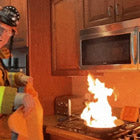 Fire
Fire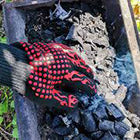 Safety
Safety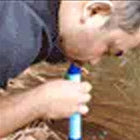 Survival
Survival Protection
Protection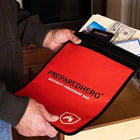 New
New
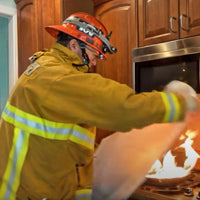 Fire
Fire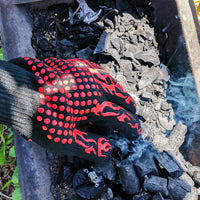 Safety
Safety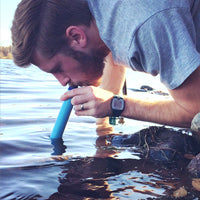 Survival
Survival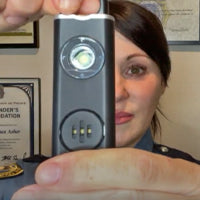 Protection
Protection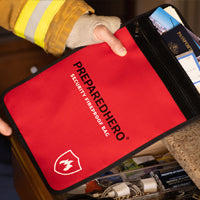 New
New
